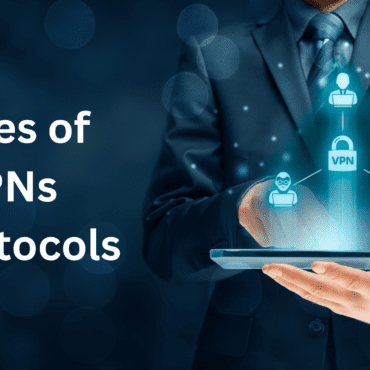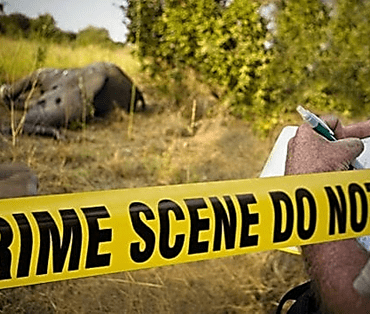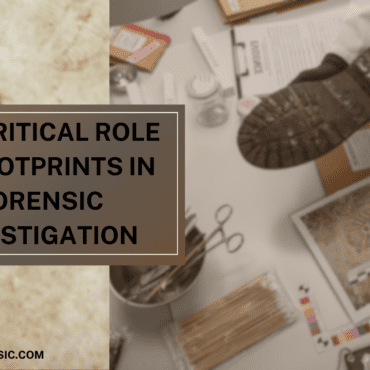
Types of VPNs & Protocols
A VPN (or Virtual Private Network) is a technology that was primarily developed to serve businesses. Its major function was to provide secure, cost-effective, and flexible solutions to safeguard corporate ...


General Forensics todayJanuary 15, 2024 1

Forensic photography is an integral part of crime scene investigation, it provides visual documentation that can be crucial in solving crimes, identifying suspects, and presenting evidence in the court or legal proceedings. Forensic photographers must implement proper techniques and follow the best practices in order to get the accurate and detailed photographs that can withstand the scrutiny in court. In this blog, we’ll dig into the world of forensic photography, exploring the techniques employed and the best practices that can ensure the reliability and integrity of evidence.
Forensic photography involves the systematic and detailed documentation of crime scenes, evidences and physical injuries using the specialized techniques. The primary objective is to create visual records that accurately and precisely represents the condition of the crime scene, preserving details that may be crucial for the investigations and legal proceedings.
Forensic photographs serve as crucial evidence in court, providing a visual representation of crime scenes and supporting the investigation process.
Forensic photographs aid investigators in reconstructing the sequence of events, spatial relationships and overall context of the crime.
Photographs properly document physical evidence such as bloodstains, fingerprints, etc. helping maintain a detailed record for analysis.
Forensic photographers use a variety of techniques to capture images that accurately represent the crime scene and evidence within it. These techniques are adopted based on the nature of the crime, type of the evidence and condition of the crime scene.
Capture wide angle shots of the entire crime scene to provide context and establish the overall layout of the scene.
Focuses on the specific area of interest, such as individual pieces of evidence to provide the detailed image for analysis.
Capture extreme close-ups of specific pieces of evidence to record minute details like tool marks, shoe impressions, biological evidence, etc.
Use various lighting techniques including oblique light and alternate light sources, to enhance visibility and reveal details that might not be visible under normal lighting conditions.
Infrared photography captures details that might not be visible to the naked eye such as latent fingerprints or bloodstains.
Use a systematic approach to capture photographs from all angles, ensuring a detailed and comprehensive documentation of the crime scene.
Photogrammetric techniques create three dimensional models of the crime scene, allowing for accurate measurements and reconstructions.
Include scales or reference markers in photographs to provide a means of measurement for further analysis.
Capture photographs sequentially to document the evolution of an investigation, from the initial state of crime scene to the completion of evidence collection.
Use special lighting and filters to capture bloodstain patterns, providing the crucial information about the nature of crime.
Use oblique lighting and casting techniques to capture detailed images of footwear and tyre impressions, aiding in their analysis and comparison.
Use macro photography to capture details of firearm markings and toolmarks, providing evidence for ballistic and toolmark analysis.
Follow strict protocols for photographing biological evidence such as hair, fiber, biological fluids, etc. ensuring the preservation of delicate samples.
Adapt techniques to capturing and recording digital evidences to document electronic evidence from things like storage media, cellphones, computer screen, etc.
While employing a variety of techniques is crucial, adherence to standard practice ensures the reliability and integrity of photographic evidence.
Prioritize the preservation of the crime scene before initiating photography to maintain the integrity of evidence.
Consider safety measures for investigators, photographers, etc. especially in hazardous or potentially dangerous crime scenes.
Capture images weather conditions, lighting conditions, and any alteration made to the scene.
Use high resolution cameras with the ability to capture detailed images, especially in challenging lighting conditions.
Use tripods and stabilization methods to prevent motion blur and ensure the clarity of images.
Should have dedicated macro lenses and equipment for capturing detailed images of small and intricate evidence.
Include alternate Light sources such as UV Lights for the visualization of certain types of evidence like bodily fluids or latent fingerprints.
Maintain a detailed chain of custody for all photographic evidence, that includes when, where and by whom each photograph was taken.
Annotate photographs with relevant information, including date, time, scale and a description of the evidence or scene.
Maintain consistency in framing and orientation throughout the photographic documentation to ensure clarity and ease of analysis.
Incorporate witnesses, experts, or collaborators in the photographic process to provide additional context and validation.
Preserve metadata associated with digital images, including date, time, and camera settings, to establish the authenticity of the photographs.
Avoid unnecessary post-processing and alterations to the photographs, ensuring that the visual representation remains faithful to the situation.
In order to avoid losing or corrupting photographic evidence, secure the system with protection and backups.
Familiarize with legal standards for the admissibility of photographic evidence in court, make sure that all applicable rules and standards are followed.
Adhere to the ethical guidelines, maintaining integrity and impartiality in the photographic documentation process.
Be prepared to provide expert testimony in the court, explaining the techniques, methodology and relevance of the forensic photographs.
Even with the careful use of methods and best practices, forensic photographers face several challenges that can impact the quality and reliability of their work.
Crime scenes may have inadequate lighting, thus forensic photographers will need to provide additional lighting or use different sources of light.
Unfavorable weather conditions such as rain or extremely high or low temperatures, might make it difficult to take clear and accurate photographs.
Certain types of evidence, especially fragile evidence like fingerprints, bloodstains can deteriorate quickly, necessitating swift and precise documentation.
It can be difficult to take photographs of little or hard to reach evidence, this requires specific tools and techniques.
The ease of digital manipulation raises concerns about the authenticity of digital images, necessitating effective measures to prevent tampering.
Photographing digital devices and screens introduces challenges in capturing clear photographs while maintaining the integrity of electronic evidence.
Forensic Photography stands at the intersection of science, technology and law, playing a pivotal role in the investigation and resolution of crimes. The meticulous application of techniques, coupled with adherence to best practices, ensure that forensic photographers produce visual documentation that is not only admissible in court but also withstands scrutiny under the most rigorous examination.
The forensic photography industry will develop in harmony with technology. By incorporating advanced imaging technology like augmented reality and 3D scanning, forensic photographers will be able to record crime scenes in new and exciting ways.
In conclusion, the techniques and best practices outlined in this comprehensive guide serve as a testament to the importance of forensic photography in unravelling the mysteries of crime scenes, providing a visual language that speaks truth to power. As forensic photography continues to evolve, so too does its capacity to uncover the secrets hidden within the scenes of criminal acts.
Tagged as: Ultraviolet (UV) photography, Evidence photography, Infrared (IR) photography, Digital forensic imaging, Bloodstain pattern documentation, Macro photography, Photographic sequencing, Close-up photography, Digital enhancement, Overview photography, Photography in low-light conditions, Lighting techniques, Forensic aerial photography, Scale photography, Photography Techniques, Forensic Science, Camera calibration, Crime scene Reconstruction, Chain of Custody, Crime scene integrity, Mid Range Photography, Forensic photography, Photogrammetry, Crime scene documentation.

Digital Forensic Glossary Jay Ravtole
A VPN (or Virtual Private Network) is a technology that was primarily developed to serve businesses. Its major function was to provide secure, cost-effective, and flexible solutions to safeguard corporate ...


Copyright 2023 all rights reserved by Hawk Eye Forensic.
Post comments (0)